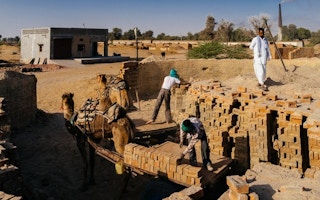India, the world’s third largest emitter of greenhouse gases(GHGs) after China and the US, is also one of the countries most vulnerable to climate change.
Yet some of India’s own academics say their government’s climate policy is seriously flawed because of institutional shortcomings, poorly co-ordinated official action, and insufficient sharing of available knowledge.
Navroz Dubash, senior fellow at the New Delhi-based Centre for Policy Research (CPR), is the lead author of a working paper and a subsequent policy brief on how India can give its climate policy effective institutional form.
He identifies the main problems as a lack of continuity in institutions, lack of co-ordination among government departments, and limited ways of aggregating knowledge.
Large array
“On international engagement, it is hard to be pro-active when the task of keeping up with the large array of discussions is so great,” he says. “To be pro-active requires developing a long-term strategy, assessing its merits, and then gradually promoting the idea over time.”
Dubash argues that India needs to learn from the example of neighbouring China, the world’s biggest emitter of GHGs, where climate change policy is organised around a National Leading Committee on Climate Change (NLCCC) headed by the prime minister.
“
By structuring the NAPCC components as separate programmes, the government has actually ensured that there is no co-ordination to make meaningful linkages with common interests on reforming the sectors that produce the greenhouse gas emissions.
Rajeshwari Raina, senior scientist at the National Institute of Science, Technology and Development Studies
Early 2008 saw the establishment in India of the prime minister’s special envoy on climate change to co-ordinate the ministries dealing with work related to climate change − from improving crop varieties and energy efficiency to cutting vehicle emissions and conserving natural resources.
“That ushered in a co-ordinated period of work leading to much progress on climate action,” Dubash says. “ But, two years later, the prime minister’s special office was dismantled following a tussle for control with the Ministry of Environment, Forest and Climate Change(MoEFCC).”
“The office of the prime minister’s special envoy on climate change did not only ensure proper co-ordination, but also helped to generate forward momentum on the National Action Plan on Climate Change (NAPCC),” Dubash says. Since then, he says, India has struggled to co-ordinate its work on climate issues, despite a proliferation of institutions for climate governance.
Then there is the matter of the proliferating missions. Under the NAPCC, India formed eight separate missions for energy efficiency – such as sustainable habitat, agriculture, water − dedicated to combating climate change.
Dubash says: “At the domestic level, if the objective is to make climate change action relevant to all, then one has to build logical links across departments and ministries. Here, the lack of a co-ordinating agency becomes an obstacle.”
Rajeshwari Raina, senior scientist at the National Institute of Science, Technology and Development Studies in New Delhi, says: “By structuring the NAPCC components as separate programmes, the government has actually ensured that there is no co-ordination to make meaningful linkages with common interests on reforming the sectors that produce the greenhouse gas emissions.”
This capacity shortfall, Dubash argues, means there is no institutional framework to help officials to understand the complex linkages between areas such as energy, urbanisation, agriculture, and water.
Understaffed
Beyond that, he believes, the institutions that do exist are understaffed, and over-burdened. For example, the MoEFCC has only six full-time staff in its climate unit, which has to cover numerous tasks ranging from keeping track of global negotiations to understanding linkages to trade, aviation and maritime issues.
“This seems like a large set of tasks for six people,” says Dubash, who points to the vastly different approach in China.
“The NLCCC in China co-ordinates the activities of the 27 government agencies addressing climate change. By housing it within the extremely powerful apex decision-making body, the National Development and Reform Commission, China has ensured that climate change is treated as an important and highly-sensitive political and economic issue.”










